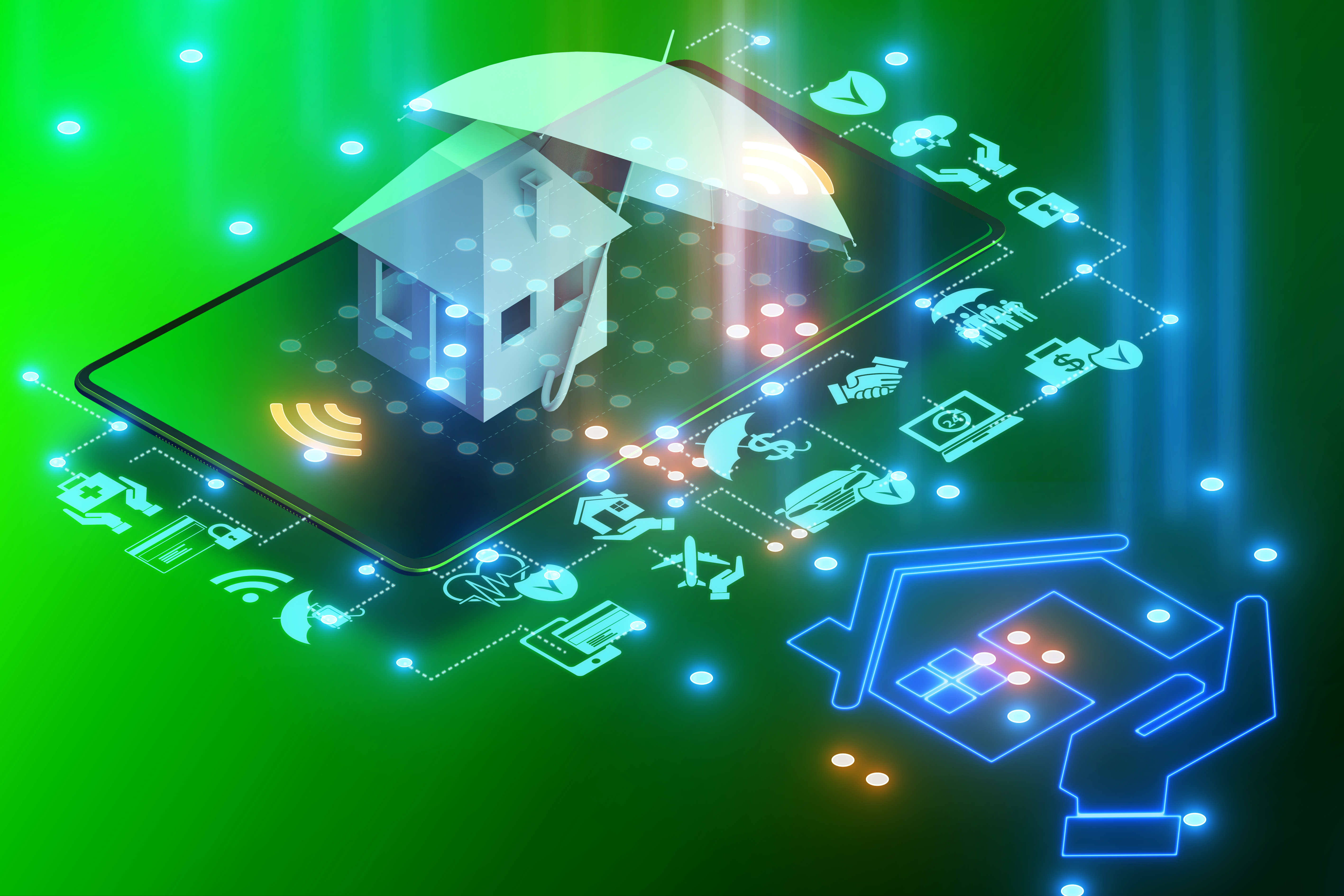Bridging the Past, Present, and Future of Tech
5G: Understanding the Technology that's Changing Connectivity
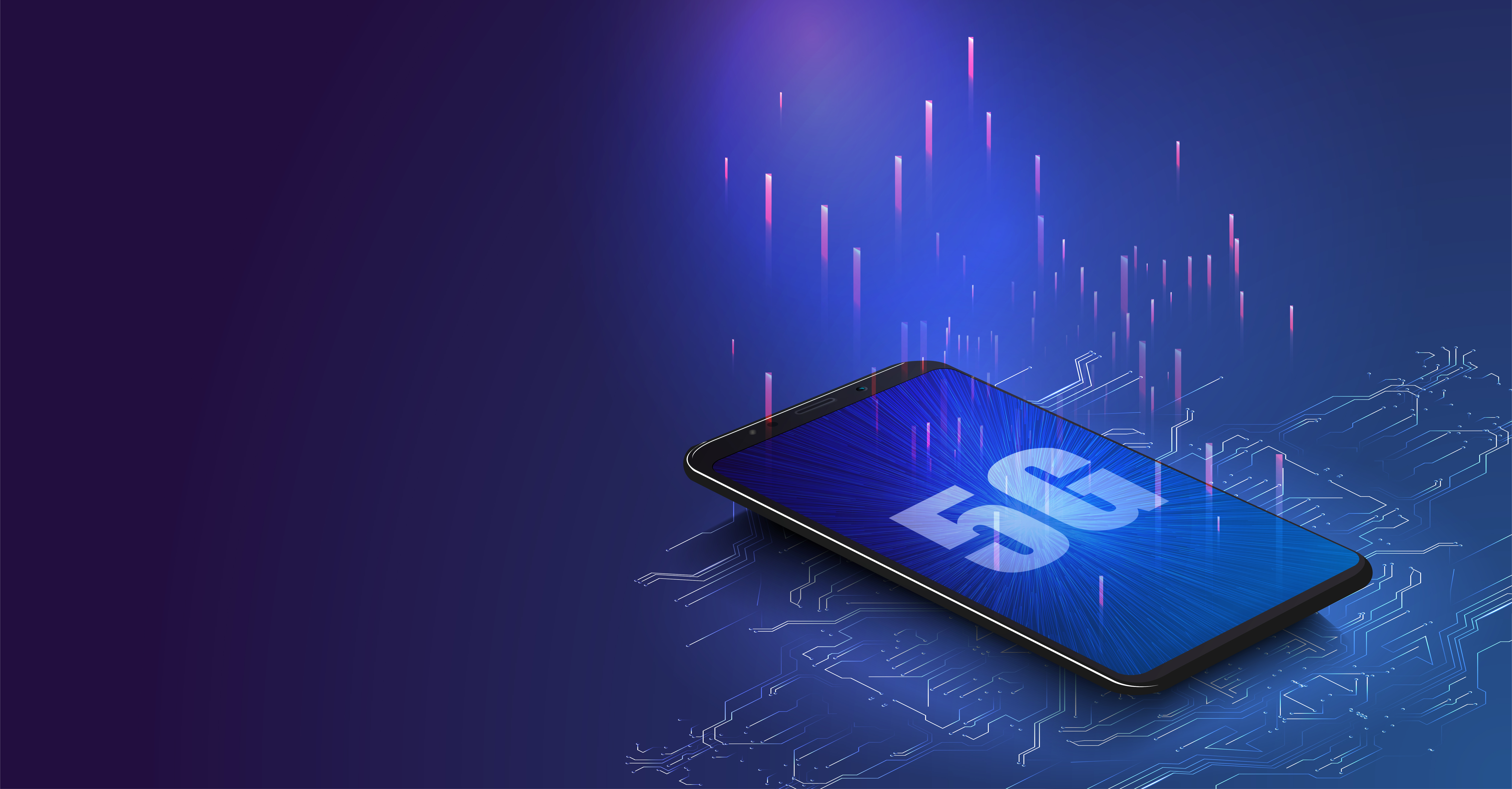
Key Takeaways
1. Unprecedented Speed and Low Latency: 5G delivers peak download speeds of up to 20 Gbps and ultra-low latency of 1-2 milliseconds, enabling real-time applications like autonomous vehicles, telemedicine, and immersive AR/VR experiences.
2. Revolutionary Infrastructure: By utilizing advanced technologies like mmWave, MIMO, and edge computing, 5G ensures seamless connectivity and unmatched performance, even in densely populated areas.
3. Transformative Industry Applications: 5G powers smart cities, connected logistics, automated manufacturing, and enhanced healthcare, driving efficiency and innovation across sectors.
4. Consumer Benefits: From instant downloads to lag-free gaming and immersive shopping experiences, 5G elevates everyday digital interactions, reshaping entertainment, education, and communication.
5. Challenges and Future Outlook: Despite infrastructure gaps, security concerns, and cost barriers, 5G is paving the way for emerging technologies like 6G, promising a hyper-connected and innovative future.
What is a 5G Network?
5G, the fifth generation of cellular wireless technology, represents a revolutionary leap in connectivity. It builds on the foundation of 4G LTE networks by delivering significantly faster download speeds, supporting a far higher density of connected devices, and achieving ultra-low latency that was previously unattainable.
The official standards for 5G were defined by the 3GPP (3rd Generation Partnership Project) in June 2018, marking a pivotal moment in telecommunications. Unlike 4G, which required extensive new cell tower construction, 5G leverages existing infrastructure while incorporating advanced radio frequency bands, such as mmWave (millimeter wave), to dramatically enhance capacity and performance. The first 5G networks were rolled out in South Korea and the United States in 2019, with global adoption accelerating rapidly thereafter.
The transition from 4G to 5G is a monumental advancement. By 2022, peak download speeds of 5G networks reached up to 20 Gbps*, a remarkable improvement compared to the 1 Gbps offered by 4G. Latency has been reduced to as low as 1-2 milliseconds—compared to the 20-70 milliseconds typical of 4G—making real-time applications, such as autonomous vehicles and remote surgery, a practical reality.
*“Gbps” stands for gigabits per second, a measure of data transfer speed indicating billions of bits transmitted per second.
In practical terms, 5G has begun to reshape the digital landscape. By 2025, its ability to handle exponentially larger volumes of data traffic is expected to enable widespread adoption of transformative technologies. These include autonomous vehicles, expansive IoT ecosystems, seamless 4K/8K video streaming, and immersive AR/VR applications. Experts project that by 2030, 5G will contribute over $1.3 trillion to the global economy, driving innovation and redefining industries across the world.
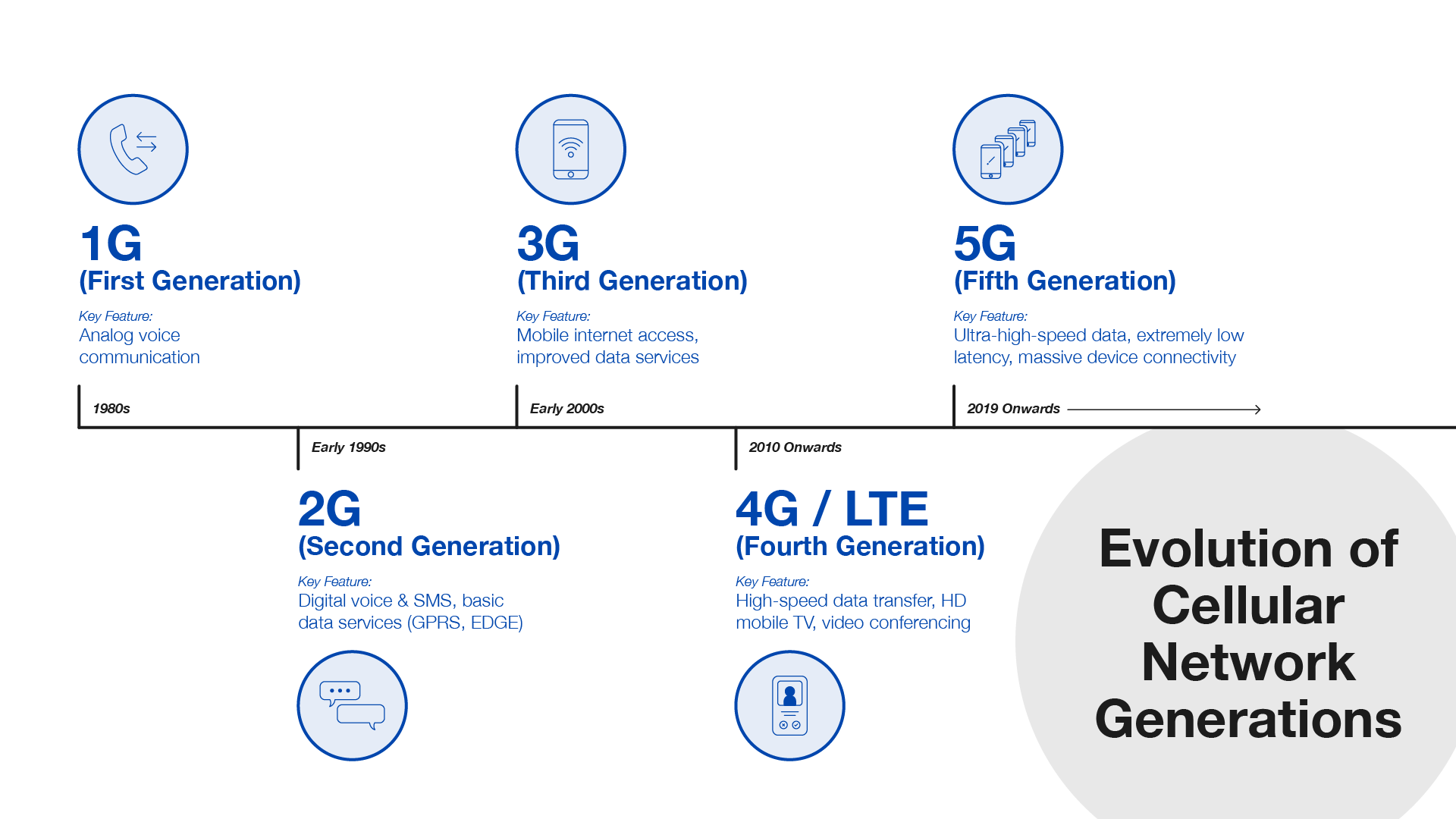
How Does 5G Work?
5G achieves its remarkable speeds, low latency, and connectivity density by utilizing a combination of advanced wireless spectrum bands and cutting-edge technologies. Here's how it works:
● Sub-6 GHz and mmWave: 5G networks operate on a wide range of radio frequencies. Sub-6 GHz bands (below 6 GHz) provide extensive coverage, making them ideal for widespread deployment, especially in rural or suburban areas. Meanwhile, mmWave bands (24-40 GHz) offer unparalleled bandwidth for ultra-fast data transmission, ideal for densely populated urban centers and high-demand environments like stadiums or airports.
● Advanced Antenna Systems (MIMO): 5G employs MIMO (Multiple Input, Multiple Output) antenna technology, allowing multiple data streams to be transmitted and received simultaneously. This innovation dramatically boosts network capacity, enabling more devices to connect without compromising speed or reliability.
● Small Cell Networks: To ensure consistent performance, 5G relies heavily on small cell networks. These are compact base stations installed on infrastructure like streetlights, rooftops, and utility poles. Small cells enhance localized network capacity and provide seamless connectivity in high-density areas.
● Orthogonal Frequency-Division Multiple Access (OFDMA): This advanced modulation technique optimizes spectrum usage by dividing it into smaller sub-channels. OFDMA enables multiple users to access the network simultaneously, ensuring efficient data transmission even under heavy load.
● Network Slicing: One of 5G’s most revolutionary features, network slicing, allows operators to create multiple virtual networks on a shared physical infrastructure. Each slice can be tailored for specific applications—for instance, one for autonomous vehicles requiring ultra-low latency and another for streaming high-definition video.
● Edge Computing: To minimize latency, 5G incorporates edge computing, which processes data closer to the user through localized data centers. This approach not only accelerates response times but also reduces the load on centralized servers, enhancing the overall efficiency of the network.
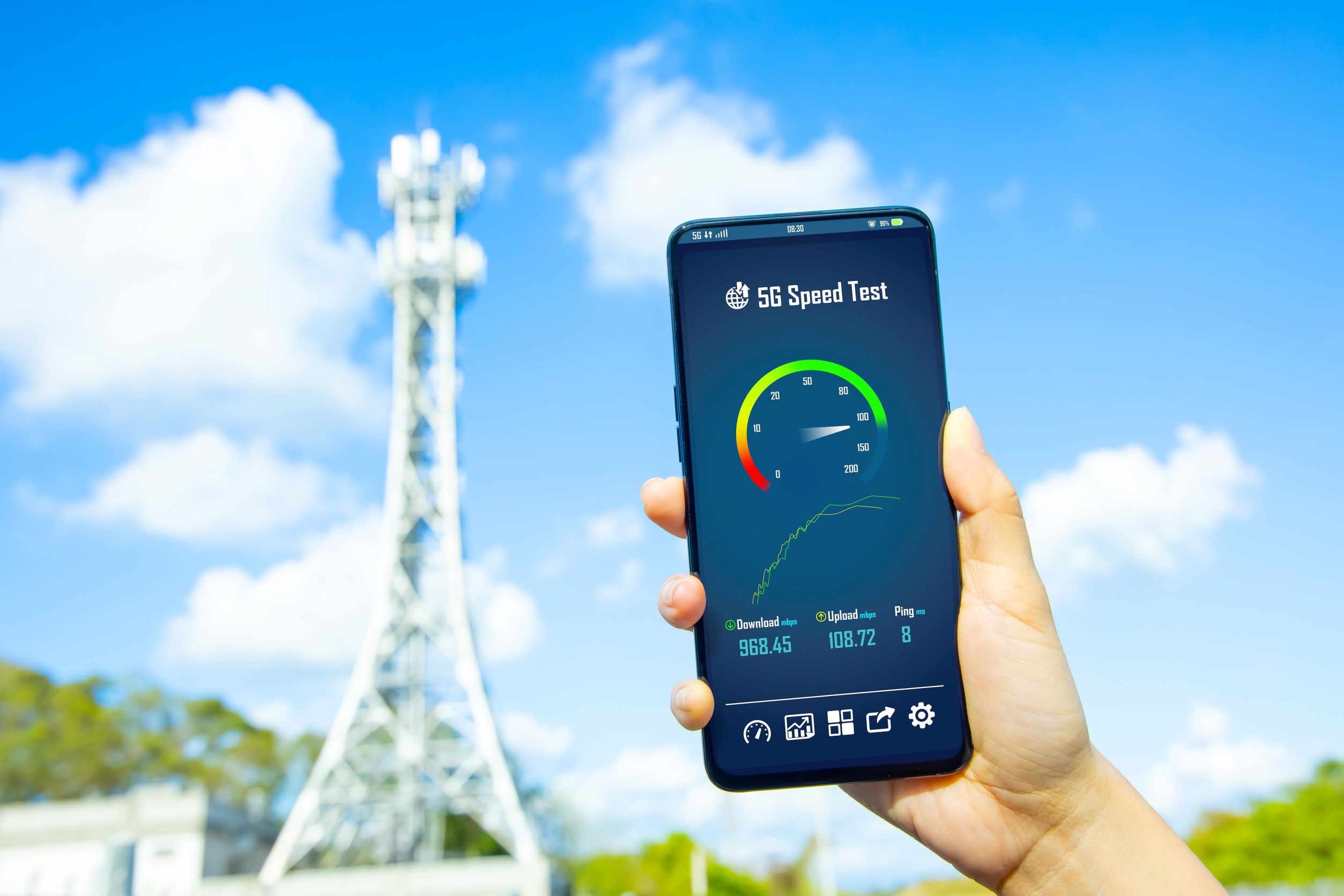
Who Invented 5G technology?
The creation of 5G technology is the result of a global effort involving telecommunication companies, academic institutions, and international standards organizations. While no single entity can claim to have "invented" 5G, its development has been shaped by the contributions of industry leaders like Ericsson, Nokia, Qualcomm, Samsung, Huawei, and ZTE. Each of these companies has played a crucial role in innovating the hardware, software, and infrastructure that underpin 5G networks.
Key international organizations, such as the 3GPP (Third Generation Partnership Project) and the ITU (International Telecommunication Union), have been instrumental in establishing the technical standards that define 5G. For example, the 3GPP released the first set of 5G specifications in 2018, paving the way for commercial deployment worldwide.
At TDK, we focus on advancing the core components that power 5G networks. Our innovations include ultra-compact DC-DC converters and LTCC AiP (Antenna-in-Package) devices, which are critical for optimizing small cell base stations—an essential element in achieving 5G’s high speeds and low latency. These technologies enhance the efficiency and performance of 5G infrastructure, enabling seamless connectivity even in densely populated areas.
Looking ahead, TDK is actively engaged in initiatives like "Beyond 5G", which aim to push the boundaries of current capabilities. Our research focuses on the next generation of wireless technologies, ensuring that 5G evolves to meet the demands of a hyper-connected future.
How Fast is 5G internet?
The launch of 5G represents a monumental leap in cellular network technology, setting a new standard for speed, reliability, and connectivity. To fully understand why 5G is a game-changer, let's first explore the evolution of mobile networks:
● 1G (1980s): Analog systems designed primarily for voice calls. There was no encryption, making security virtually nonexistent, and upload speeds were negligible.
● 2G (1990s): The first digital networks introduced enhanced security and basic data services like SMS. However, speeds were capped at just 64 kbps—downloading a 3-minute song took over 20 minutes.
● 3G (2000s): Brought mobile internet to the mainstream, with speeds ranging from 384 kbps to 2 Mbps. While a step forward, these speeds were insufficient for smooth video or music streaming.
● 4G LTE (2010): Marked a turning point with speeds capable of supporting HD video streaming, advanced apps, and large file downloads. Peak theoretical speeds reached 100 Mbps, though real-world performance was often lower.
Now, with 5G, we are stepping into a new era of connectivity. How much faster is 5G than 4G? Using advanced radio frequency bands and shorter data transmission bursts, 5G achieves lightning-fast speeds and ultra-low latency. Latency has been reduced to mere milliseconds, enabling real-time communication for devices like autonomous vehicles and smart home systems.
The Speed Advantage
5G outshines its predecessors in every metric. With peak download speeds reaching up to 20 Gbps—20 times faster than 4G's 1 Gbps—5G redefines expectations. For example, downloading a full HD movie on 3G would take 26 hours, on 4G 6 minutes, and on 5G just 3.6 seconds.
Why is 5G Better than LTE or 4G?
The benefits of 5G extend beyond speed. It delivers:
● Significantly increased capacity, enabling millions of devices to connect seamlessly.
● Reduced latency, essential for applications like telemedicine and industrial automation.
● Enhanced network reliability, paving the way for innovations in sectors like healthcare, manufacturing, and transportation.
A Radical Upgrade
5G isn’t just an incremental improvement; it’s a 10-100X upgrade over 4G networks. From speed to capacity and reliability, 5G represents a paradigm shift in what networks can achieve.
The Big Picture
5G's capabilities unlock a world of seamless connectivity and real-time automation that previous generations could only dream of. Beyond faster speeds, it enables real-time data processing, connects billions of devices, and lays the foundation for smart cities and autonomous technologies. Where earlier generations connected people, 5G is poised to connect the entire world.
What’s Next?
The groundwork established by 5G paves the way for future advancements like 6G, which promises even greater speeds, lower latency, and unprecedented possibilities for innovation.
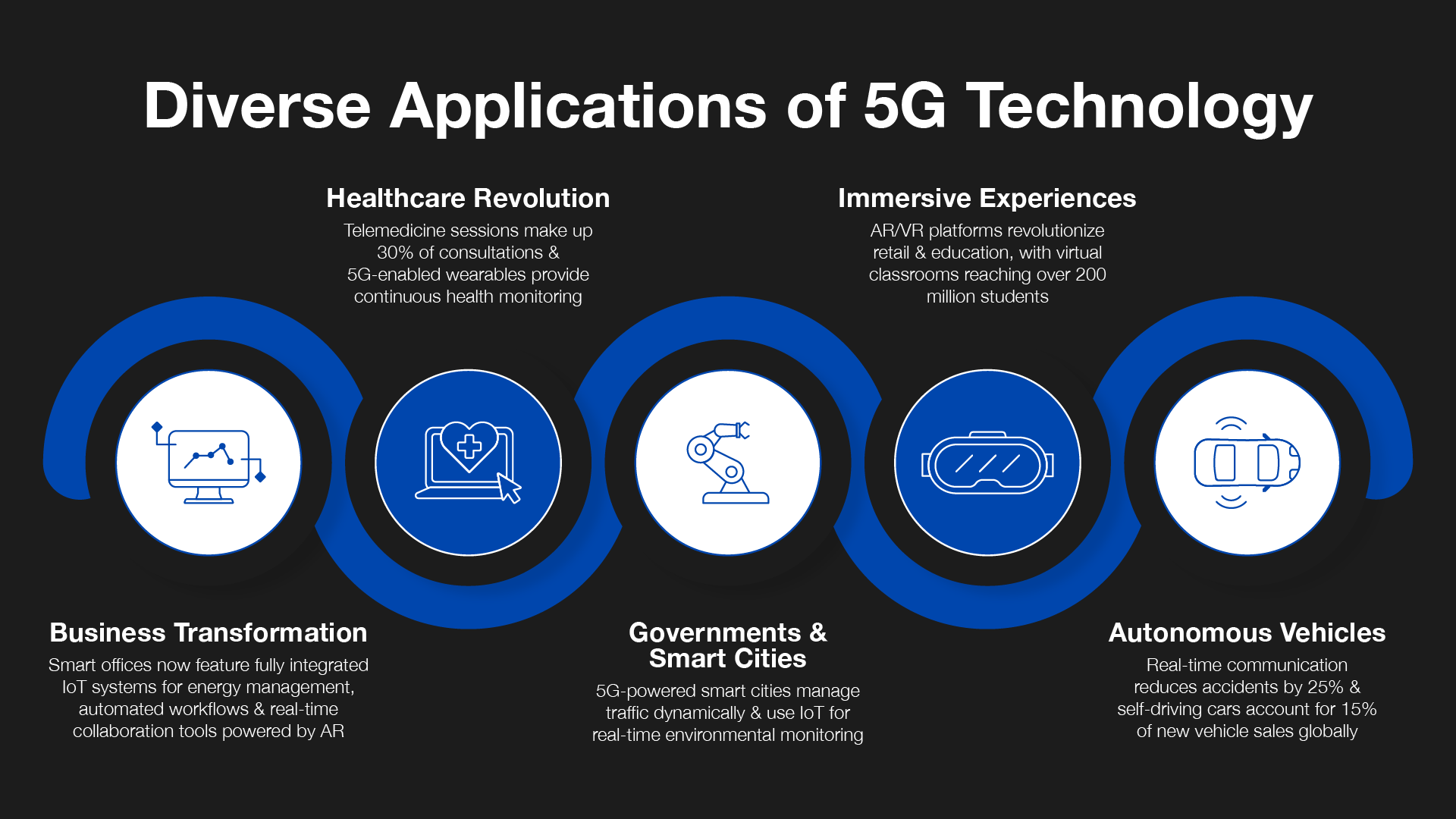
What Will 5G Enable? Exploring Its Impact Across Different Spheres
As we stand in 2025, 5G has already begun to transform industries, governments, and daily life with its ultra-fast speeds, near-zero latency, and capacity to connect billions of devices. Here's how this revolutionary technology is reshaping the world:
Business Transformation
5G is driving innovation across industries:
● Many companies are planning to implement 5G solutions in the coming years. This trend highlights the growing relevance of advanced networks, which enable real-time data processing and foster greater flexibility and agility in business operations. With 5G, companies can experiment and innovate more freely, overcoming traditional constraints.
● Connected logistics benefit from real-time tracking of goods and predictive analytics, leading to significant reductions in delays compared to pre-5G systems.
● Industries such as retail, healthcare, and manufacturing are increasingly adopting 5G-enabled robotics and automation to enhance efficiency and improve customer experiences.
Governments and Smart Cities
Governments are leveraging 5G for smarter urban management:
● Smart cities powered by 5G are improving traffic flow and reducing congestion in major metropolitan areas.
● IoT-based environmental monitoring helps track air quality and water usage in real-time, supporting sustainability initiatives.
● 5G and Emergency Response
● 5G connectivity is improving emergency response efforts by enabling faster communication and more effective data sharing among agencies.
Healthcare Revolution
5G has accelerated innovation in healthcare:
● Telemedicine adoption has grown significantly, with 5G enabling high-quality video consultations and real-time diagnostics.
● Wearable devices with 5G connectivity support continuous health monitoring, with an increasing number of users adopting these technologies. A report by Spherical Insights highlights that wearables leveraging 5G are improving real-time patient monitoring, aiding in early disease detection.
● Remote surgeries, once considered futuristic, are becoming more feasible as 5G ensures greater precision and reliability in robotic-assisted procedures.
Immersive Experiences
5G is revolutionizing entertainment and education:
● AR/VR platforms are now central to retail, with virtual fitting rooms and immersive product demonstrations standard across major brands.
● In education, 5G-powered virtual classrooms provide interactive lessons to over 200 million students globally, bridging gaps in rural areas.
● 8K streaming and hyper-realistic VR gaming are now mainstream, creating entirely new forms of digital interaction.
Autonomous Vehicles
Autonomous vehicles have become a reality in 2025, thanks to 5G:
● Real-time communication between vehicles and infrastructure is improving traffic safety in smart city pilot programs, with early implementations showing a reduction in accident rates.
● The adoption of self-driving cars is steadily increasing, with 5G playing a crucial role in obstacle detection, navigation, and decision-making. According to Verified Market Reports, the U.S. autonomous vehicle market is projected to reach $86 billion by 2030, driven by advancements in 5G connectivity and AI-powered decision-making.
Consumer Benefits
For everyday users, 5G offers:
● Instant downloads, with a full 8K movie taking under 10 seconds.
● Seamless gaming, with latency as low as 1 millisecond, delivering a lag-free experience.
● AR apps that redefine shopping, travel, and learning experiences, from virtual try-ons to immersive travel planning.
Challenges to Overcome
While 5G brings transformative benefits, challenges persist:
● Infrastructure gaps: Rural areas and developing regions still lag in 5G deployment, with full global coverage projected by 2028.
● Security concerns: The massive increase in connected devices raises risks of cyberattacks, prompting new industry standards.
● Cost barriers: 5G-compatible devices remain expensive, slowing adoption for some consumers.
The Bigger Picture
5G is more than an upgrade—it’s the foundation of a hyper-connected world. From smart cities to self-driving cars, this technology is enabling innovations that redefine what’s possible. Looking ahead, preliminary exploration of 6G concepts is in its infancy, with ongoing discussions among experts about its potential advancements over time, building on the groundwork laid by 5G.
Conclusion
As 5G takes center stage in 2025, its transformative power is reshaping industries and daily life in unprecedented ways. With lightning-fast speeds, ultra-low latency, and the ability to connect billions of devices, 5G is not just a technological milestone—it’s the foundation of a new era of innovation. From autonomous vehicles and smart cities to immersive entertainment and life-saving healthcare applications, 5G is bridging gaps and unlocking possibilities that were once out of reach.
While challenges like infrastructure expansion and security concerns remain, the collaborative efforts of industries, governments, and innovators are paving the way for widespread adoption. The future is bright as 5G lays the groundwork for emerging technologies like 6G, which will further amplify its impact.
By embracing the immense potential of 5G, we are building a hyper-connected, more efficient, and empowered world. The possibilities are boundless, and the journey has only just begun.
FAQ
1. What is 5G, and how is it different from 4G?
5G is the fifth generation of wireless technology, offering significantly faster speeds, lower latency, and higher device connectivity compared to 4G. It supports real-time applications like autonomous vehicles and telemedicine, which were not feasible with 4G.
2. How does 5G achieve its high speeds and low latency?
5G uses advanced technologies such as mmWave frequencies, MIMO antennas, small cell networks, and edge computing to optimize data transmission and minimize delays.
3. What industries benefit most from 5G?
Industries like healthcare, manufacturing, logistics, education, and entertainment benefit from 5G’s capabilities. It enables innovations like remote surgeries, smart cities, automated supply chains, and immersive AR/VR experiences.
4. When will 5G be available everywhere?
While 5G is expanding rapidly, full global coverage is expected by 2028. Some rural and underdeveloped areas may experience slower adoption due to infrastructure challenges.
5. Is 5G safe to use?
Extensive studies indicate that 5G is safe and meets international health and safety standards. However, like all wireless technologies, its infrastructure requires careful implementation to ensure reliability and security.
6. What are the challenges associated with 5G?
Key challenges include infrastructure deployment in rural areas, increased cybersecurity risks from connected devices, and the high cost of 5G-compatible devices for consumers.
7. Can 5G support older devices?
No, older devices designed for 4G or earlier networks cannot connect to 5G. Users will need 5G-compatible devices to access the network.
8. What’s next after 5G?
Research on 6G is already underway, aiming to provide even faster speeds, lower latency, and innovative features by 2030. 6G will build on the foundation laid by 5G to unlock new technological possibilities.
Sources of Inspiration:
● 5G - Wikipedia
● 5G System Overview
● Technical Specifications and Technical Reports for a 5G based 3GPP system
● ITU Standardization on 5G
● What is 5G? | Everything You Need to Know
● 5G Use Cases and Industry Applications
TDK is a comprehensive electronic components manufacturer leading the world in magnetic technology




